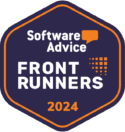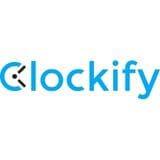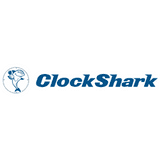- Free Version: Available for teams of up to 10
- Pricing: Premium plan $24/seat/month (with free 30-day trial period)
- Platforms supported: Available as a mobile app (iOS and Android) or a web-based software
Why Use SafetyCulture?
With SafetyCulture, managers can make tracking and managing downtime much more efficient. This platform allows workers to conduct digital inspections and audits to spot downtime instances, empowering them to take things into their own hands. It also gives real-time alerts to managers so that the team is always on top of downtime instances, making it easier to fix and prevent them. As an operations improvement platform, SafetyCulture also goes beyond issue identification and repair, providing solutions to improve worker productivity, skills, and collaboration.
Features:
- Use downtime report and maintenance templates, checklists, and forms to ensure all workers report downtime instances appropriately and in an organized manner.
- Stay on top of downtime instances through real-time alerts.
- Assign actions when downtime instances are reported so that they get solved immediately.
- Monitor assets through smart sensors to make it easier to prevent downtime caused by faulty equipment.
- Gather data analytics on downtime instances and use the information to make better decisions for the organization.
Why Use Clockify?
Clockify is a free, dedicated time tracking software that makes it easier to spot downtime instances. With Clockify, users can track time spent on various projects and analyze productivity, making it easier to find ways to improve overall workflow.
Features:
- Real-time tracking
- Project and team management
- Progress monitoring
- Free Version: Yes
- Pricing: Free
- Platforms supported: Web, On-premise, iOS, Android
Why Use Quickbooks Time by Quickbooks?
Quickbooks makes project planning and management much easier as it provides managers with a dedicated platform for spotting issues, delegating tasks, and more. It also provides managers with a time tracking solution called Quickbooks Time, ensuring downtime is properly monitored in all industries.
Features:
- Mileage monitoring
- Location and worker tracking
- Payroll and invoice integrations
- Free Version: No
- Pricing: Starts at $6/month (with free 30-day trial period)
- Platforms supported: Web, iOS, Android
Why Use Clockshark?
Clockshark is a time-tracking tool specifically designed for construction teams. This platform makes clocking in and clocking out easier for employees. ensuring managers can get a comprehensive record of time spent working and spot downtime instances easier.
Features:
- Multiple employee tracking
- Job costing
- Technician dispatching
- Free Version: No
- Pricing: Starts at $40/month (with free 14-day trial period)
- Platforms supported: Web, iOS, Android
Why Use Paymo?
Paymo is a dedicated project manager solution with time tracking capabilities designed for smaller companies, allowing managers to gain a bird’s eye view of operations, which includes downtime. It integrates task management, time monitoring, and invoicing into one platform, making workflow seamless.
Features:
- Automatic time tracking
- Invoicing and cost estimating
- Shareable reports
- Free Version: No
- Pricing: Starts at $5.9/user/month
- Platforms supported: Web, On-premise, iOS, Android
Why Use Deputy?
Deputy is primarily a workforce management tool that also allows users to track and manage downtime. This platform offers accurate employee timesheets and a secure record of time data that managers can revisit when spotting downtimes and finding ways to enhance operations.
Features:
- Automated timesheet approval
- Wage calculator
- Profit estimates
- Free Version: No
- Pricing: Starts at $4.50/user/month (with free 31-day trial period)
- Platforms supported: Web, iOS, Android
Why Use Replicon?
Replicon is a timesheet platform that collects timesheet data digitally, making it easier for managers to view the record and find downtime instances. It offers real-time insights and is highly adaptable to various industries, making it a great pick for organizations that require time tracking across multiple locations.
Features:
- Project expense calculator
- AI-powered chatbots
- Integrations with accounting software
- Free Version: No
- Pricing: Starts at $6/month
- Platforms supported: Web, iOS, Android
What is Downtime Tracking Software?
A downtime tracking software is a specialized tool that monitors, analyzes, and records instances of unintended downtime for employees, systems, and machines. These interruptions can be due to scheduled maintenance, unexpected failures, or system malfunctions. Using this software helps in identifying and logging downtime incidents, which is essential for businesses reliant on continuous operational processes.
Importance
Downtime refers to instances when a system or piece of machinery is non-operational. This happens in every industry, and it’s unavoidable at times. However, it’s critical that managers record these downtime instances to pinpoint systemic issues or recurring disruptions. This is why downtime tracking software is important for modern companies.
On top of that, downtime tracking software supports decision-making processes by providing detailed insights and analytics. Managers can use this data to justify investments in new equipment or technology, predict potential future failures, and optimize the performance of existing assets, making this one of the most important tools in a company’s arsenal.
Key Features
Downtime tracking platforms come with various features and benefits. While it’s best to select options that have features that cater to your organization’s unique needs, there are some features that are must-haves when using these platforms. Here are some of these key features to look out for:
- Real-time monitoring
- Automated incident logging and reporting
- Customizable alerts
- Root cause analysis tools
- Performance analytics
- Maintenance scheduling
- Historical data analysis
- Integration capabilities with other work software and sensors
How to Choose the Right Downtime Tracking Software
There are many options when choosing downtime tracking software. Here’s a quick breakdown and comparison of the different software options featured above:
| Downtime Tracking Software | Free Version | Paid Plan | Mobile App |
| SafetyCulture | Yes | $24/user/month* | Yes |
| Clockify | Yes | Free | Yes |
| Quickbooks Time by Quickbooks | No | $6/month | Yes |
| Clockshark | No | $40/month | Yes |
| Paymo | No | $5.9/user/month | Yes |
| Deputy | No | $4.50/user/month | Yes |
| Replicon | No | $6/month | Yes |
* billed annually








